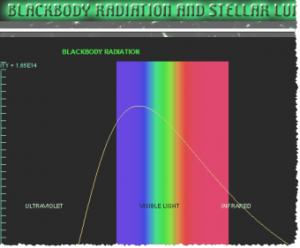Star brightness and star distance: Difference between revisions
m (Adding attribution) |
m (subjects, ages, types) |
||
| Line 2: | Line 2: | ||
[[Category:Science]] | [[Category:Science]] | ||
{{Rinfo | {{Rinfo | ||
|type= Lesson idea | |||
|attribution={{Chris Tooley}} | |attribution={{Chris Tooley}} | ||
|final= | |final= | ||
Latest revision as of 15:48, 28 September 2012
Astronomy - presentations
[[|<<<]]
[[|>>>]]
This resource may not be final.
Lesson idea. In the 17th century, Christian Huygens discovered how to estimate how far away a star is. He made a series of smaller holes in a screen facing the sun, until he estimated the light was the same intensity as the star Sirius. Huygens' results were surprisingly accurate, but still wrong. This lesson follows work where students learn how parallax can be used to calculate the distance of stars, though not all. Students often believe that the earlier scientists made foolish assumptions. This series of slides may inspire you to tell the remarkable story of how we measure stars. It may help you help students to understand the amazing stretches of imagination needed to come up with those early hypotheses. The teacher explains his slides in an audio file. He also provides a link to an black body radiation tool.
Teaching approach. Students are challenged to put aside ‘modern knowledge’ of astronomy and consider the position of Huygens in the 17th Century. This lesson uses a story and humour to draw students into a narrative and place them in a dialogue with Christiaan Huygens, a character from astronomy history. The lesson model is that of active note-making. Students are provided with mini-diagrams* around which they build up personalised notes about the lesson. Students must not take notes from the board but instead must use their creativity to develop their own notes. They are encouraged to use colour, image, symbols, humour and metaphor to lead them through a richer learning experience. Students need help in achieving this but soon catch onto the idea. They become more independent with taking notes and more attentive to the subject at hand. The resource would be used in a whole class setting although each chapter of the story focuses on small group discussion and feedback. The teacher keeps a clear focus to use open rather than closed questioning throughout.
- Two sets of mini-diagrams can be printed to ensure that students have a shared visual resource on which they can build their memories. This is used by students as the centre-point of their notes. (edit)
| Resource details | |
| Title | Star brightness and star distance |
| Topic | |
| Teaching approach | |
| Learning Objectives |
|
| Format / structure | |
| Subject | |
| Age of students / grade | |
| Table of contents | |
| Additional Resources/material needed | |
| Useful information | |
| Related ORBIT Wiki Resources | |
| Other (e.g. time frame) | |
| Files and resources to view and download |
The presentation has been converted to alternative formats:
|
| Acknowledgement | |
| License | |

